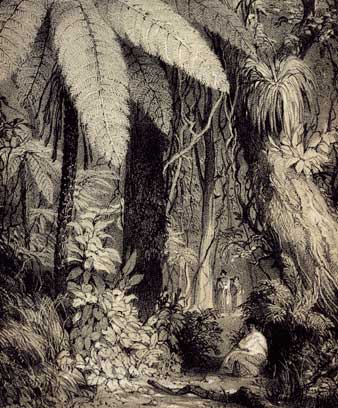Story summary
What is the bush?
‘The bush’ means different things in different countries. In Australia it is the outback, which is mostly open, with scattered gum trees.
The New Zealand bush: dense forests
In New Zealand, the bush means the native forests. Tall trees tower above shrubs and younger trees. Beneath these grow ferns and mosses. Sunlight filters through the lush foliage, and birds and insects thrive. The bush is often dense and tangled, and you can easily get lost.
Attitudes to the bush
The ancestors of Māori were coastal dwellers from small Pacific islands. Māori tribes did not live within the forest, but they used the plants for food, medicine and other resources, and hunted the birds. They believed the bush was the home of gods and spirits.
European settlers found the bush very hard to travel through. For some it was gloomy and frightening. Vast areas of the bush were cleared to create open farmland.
Later, people appreciated the beauty of the remaining native forests and their unique species. A network of tracks made it easier to walk there, and thousands of tourists visited every year. You can experience many things in the bush – from getting lost to chasing a possum!





